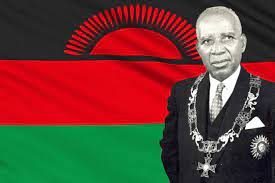African Immigrants are the Most Educated
For example, 43.8 percent of African immigrants had achieved a college degree, compared with 42.5 of Asian-Americans, 28.9 percent for immigrants from Europe, Russia and Canada and 23.1 percent of the U.S. population as a whole.
That defies the usual stereotypes of Asian-Americans as the only “model minority.” Yet the traditional American narrative has rendered the high academic achievements of black immigrants from Africa and the Caribbean invisible, as if that were a taboo topic.
Instead, we should take a closer look. That was my reaction in 2004 after black Harvard law professor Lani Guinier and Henry Louis Gates Jr., chairman of Harvard’s African-American studies department, stirred up a black Harvard alumni reunion with questions about precisely where the university’s new black students were coming from.
About 8 percent, or about 530, of Harvard’s undergraduates were black, Gates and Guinier said, but somewhere between one-half and two-thirds of the black students were “West Indian and African immigrants or their children, or to a lesser extent, children of biracial couples.”
If we take a closer look, I said at the time, I bet we’d find that Harvard’s not alone. With all of the ink and airwaves that have been devoted to immigration these days, black immigrants remain remarkably invisible. Yet, their success has long followed the patterns of other high-achieving immigrants.
Now comes a new study that finds a consistent pattern of Ivy League and other elite colleges and universities boosting their black student populations by enrolling large numbers of immigrants from Africa, the West Indies and Latin America.
Immigrants, who make up 13 percent of the nation’s college-age black population, account for more than a fourth of black students at Ivy League and other selective universities, according to the study of 28 colleges and universities. The authors of the study, published recently in the American Journal of Education, included Douglas S. Massey of Princeton University and Camille Z. Charles at the University of Pennsylvania. The proportion of immigrants was higher at private institutions, 28.8 percent, than at the public colleges, where they comprised 23.1 percent of enrollment.
Are elite schools padding their racial diversity numbers with black immigrants who do not have a history of American slavery in their families? This development immediately calls into question whether affirmative action admission policies are fulfilling their original intent.
But, as Walter Benn Michaels, a professor of English at the University of Illinois at Chicago, writes in his book “The Trouble With Diversity,” the original intent of affirmative action morphed in the 1970s from reparations for slavery into the promotion of a broader virtue: “diversity.” Since then, it no longer seems to matter how many of our colleges’ black students have slavery in their families. It only matters that they’re black.
That said, I don’t begrudge black immigrants or any other high-achieving immigrants for their impressive achievements. I applaud them. I encourage more native-born American children, particularly my own child, to take similar advantage of this country’s hard-won opportunities. But I also think we need to revisit the question of diversity. Unlike our system of feel-good game-playing, we need to focus on the deeper question of how opportunities can be opened to everyone who was left behind by the civil rights revolution. We tend to look too often at every aspect of diversity except economic class.
Originally appeared in Chicago Tribune.
Clarence Page is a member of the Tribune’s editorial board.



